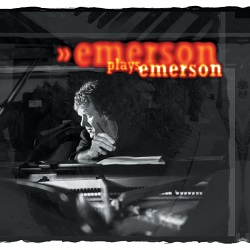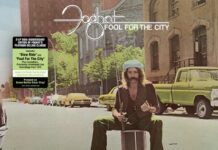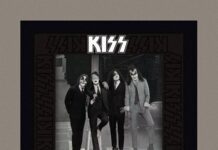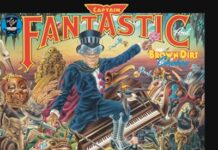For all the fame and glory Keith Emerson enjoyed in the 1970s as a member of Emerson, Lake & Palmer, his post-ELP career was a mixed bag of near misses, strange collaborations, miscalculated experiments and colorful soundtracks. Which isn’t to say he lost his ability to compose, play and perform; it’s just that the commercial appeal he achieved with ELP never quite regained its footing. You could attribute that to a great many things, most likely an ever-changing tide of musical tastes and trends. After ELP reunited for six years in the 90s, it seems the keyboardist realized the best thing he could do is to just be himself. With the release of Emerson Plays Emerson in 2002, he did just that.
Spread out over 22 different pieces, Emerson Plays Emerson, long out of print and recently reissued by his estate, is Keith Emerson at his core — primarily him at the piano, massaging the ivories as he only could. Without burdening himself with a bank of keyboards, synthesizers and effects, the album gave Emerson the opportunity to shed the excess for something more profound and pure. His masterstrokes on numbers like “Vagrant,” “Solitudinous” (a word he made up), and “A Blade of Grass,” which he scratched out in the 90s at an ELP recording session, are emblematic of simple ideas that blossomed from Emerson’s instinct for composition and melody. Short and to-the-point piano excursions that highlight Emerson’s exquisite touch are at the heart of the disc — from the allegorical beauty of “Outgoing Tide,” to the transitional nature of “Interlude,” onto the soothing intonations of “Soulscapes.”
Of course, Emerson had no issues with acknowledging his influences, so he added a few adaptations and spins through inspired techniques and tributes to Emerson Plays Emerson. The double-handed octave attack on Alberto Ginastera’s “Creole Dance” was a staple of ELP’s live repertoire in the 90s, and was probably included here for prosperity. George Gershwin is another one whose sway carries “Broken Bough,” as well as on his own famous standard “Summertime” that prompted Emerson’s jazzy arrangement. “Roll’n Jelly” is, in Emerson’s own words, “a nod in the direction of Jelly Roll Morton,” while “Barrelhouse Shakedown” and Meade Lux Lewis’ “Honky Tonk Train Blues,” both initially recorded for ELP’s Works – Volume 2 album, show off the keyboardist’s love for ragtime, boogie woogie and blues. The latter, released as a Top 40 UK single, is taken from a live performance Emerson did in 1976 with legendary jazz pianist Oscar Peterson.
One track with a somewhat ominous feel is “For Kevin,” inspired by Kevin Gilbert, a friend and underrated musician whose fateful passing was as tragic as Emerson’s. Still, the record ends on a rather auspicious, poetic note with the delightful medley of “Nicola,” “Silver Shoes” and “I’ll See You In My Dreams” recorded by Emerson when he was only 14. It certainly demonstrates his virtuosity was recognized at any early age, and would only evolve as he eventually became a world-class musician. It makes complete sense his family would want to bring Emerson Plays Emerson back to life. As his eldest son Aaron said: “This album was a labor of love for Dad, so we decided to go with the original artwork to stay as true to the original as possible as we understand how happy Dad was with it. I know he would be happy with this reissue.” After listening to Emerson Plays Emerson, it doesn’t take long to realize it was an album Keith Emerson really needed to make.
~ Shawn Perry




















